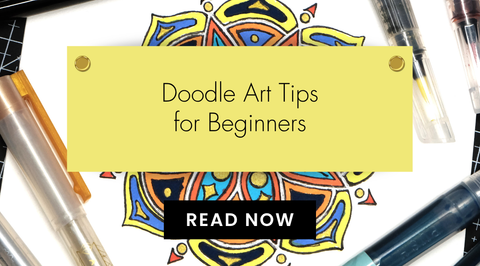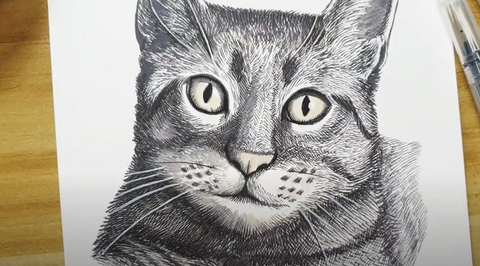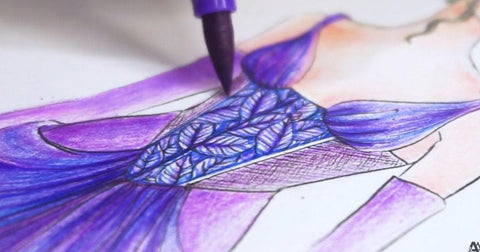Busting Common Watercolor Painting Myths
Last Updated: December 6, 2024
If you’ve never done watercolor painting before, chances are you think it’s too challenging or complicated for a beginner. Beautiful paintings or watercolor projects require technique and experience, that’s for sure, but anyone can do it!

New York Cityscape Gouache Bundle
As you continue learning how to watercolor, you’ll discover new techniques and ways to avoid watercolor mistakes and find inspiration for what you want to create. But for now, let’s talk about the common watercolor myths and why you should believe otherwise.
Anyone Can Learn Watercolor Techniques! Let’s Debunk Some Myths
Don’t let a blank page intimidate you! With time and practice, anyone can make stunning art with a brush, canvas, and some vibrant watercolors.
Myth #1 - You Need Expensive, Professional Supplies
Choosing watercolor materials like color palettes, watercolor tubes, or paintbrushes can be intimidating for a beginner. You’re surrounded by so many overly expensive tools when, in reality, you just need the essentials! A canvas or watercolor paper, a trusty watercolor set, and a few good paintbrushes will be perfect.

Artists’ Watercolor 24 Pan Set
All you need is a good balance between affordability and high quality. Over time, if you feel like you’re more confident in buying more pricey watercolor materials, then you can build up to it as you learn, but there’s certainly no need to break the bank as you’re starting.
Myth #2 - Learning Watercolor Techniques Is Difficult
If you’ve seen professional works of art like those of Monet, Van Gogh, or maybe from professional painters online, you might think there’s no way you’ll ever come close to achieving results like that. Well, while it’s true that they use a bunch of different watercolor techniques, you can learn them too!

In fact, there are easy watercolor exercises you can do to help you improve! From learning basic brush strokes to color blending, all you need to do is start somewhere, practice, and eventually work your way up to more advanced techniques!
Myth #3 - Watercolor Is Only for a Specific Style or Subject
When people think about watercolor artwork, landscapes, or subjects like bowls of fruit often come to mind first. These are amazing subjects to work with, but there is no limit to what you can create with watercolors! Go with what inspires you, and this will also help motivate you to keep painting in the long run!

Watercolor Brush Markers Tropical Fiesta Set
Aside from landscapes, plants, or fruits, why not try painting people? Or maybe some of your favorite things to eat? Animals could be a great subject as well, or everyday objects like a book, vehicle, or clothing! If you’re not looking to paint anything specific, abstract art could be just the thing! The possibilities are endless, so don’t limit yourself to typical styles and subjects.
Myth #4 - Old, Dried Watercolor Paint Should Be Thrown Away
If you’re into using watercolor pans, you’ve probably seen some of the pigments dry up after use. This is normal because applying water to your palettes will activate the paint, and it’ll eventually dry up when you’re not using it. For your next painting sesh, all you need to do is apply some more water and the paint will reactivate again.

Metallic Watercolor 14 Pan Set
So next time you notice that your watercolor pans are looking dried and crusty, a bit of water will go a long way! If you’re looking for other painting options, try watercolor tubes or water-based markers!
Myth #5 - There Is No Room for Mistakes
Just like anything else you’re new to, remember not to be so hard on yourself. There’s a very good chance you won’t get things right the first time around, and that’s perfectly fine! Mistakes are how you learn, and navigating through those mistakes will be your secret weapon to being a better colorist!

Plus, watercolors are more forgiving than you think. Water-based mediums can easily be manipulated to achieve the effect you’re going for. If you make minor mistakes, you can also learn to cover them up or remedy your artwork without having to throw the whole thing away!
Watercolor for Beginners: Tips to Help You Get Started!
After reading about some of the most common watercolor myths, we hope these have helped ease any doubts or misconceptions you have about pursuing this art. To kick-start your journey, we’ve compiled a few watercolor painting tips every colorist should know:
- Try to draw or make an outline of what you want to paint first
- Play with different color combinations, layering, and blending
- Use the correct amount of water for optimal results
- Explore different approaches and styles for inspiration
- Try watercolor exercises to build your confidence
Say Goodbye to Watercolor Myths and Get To Painting!
Just because you’re a beginner watercolorist, doesn’t mean you can’t get better over time. This art style might seem intimidating from the outside looking in, but there are plenty of ways to become proficient in watercolor painting.
Now, toss those myths and misconceptions aside and start coloring! For more tips and inspiration on all things art, head over to The Creative Corner.










Thank you so much, Michelle! We’re so glad we inspired you with this post. Happy crafting! :)
I love reading these features. So inspiring!
Thanks for sharing.